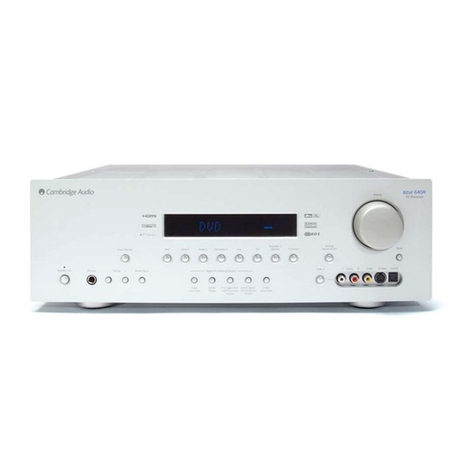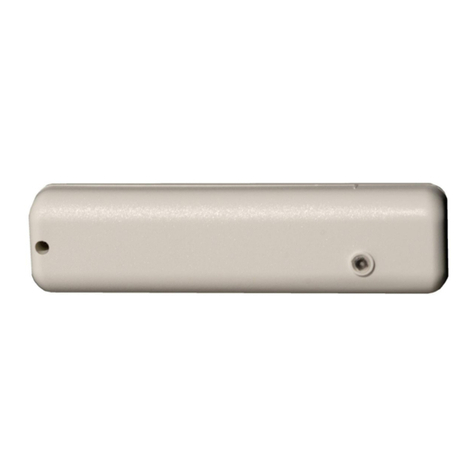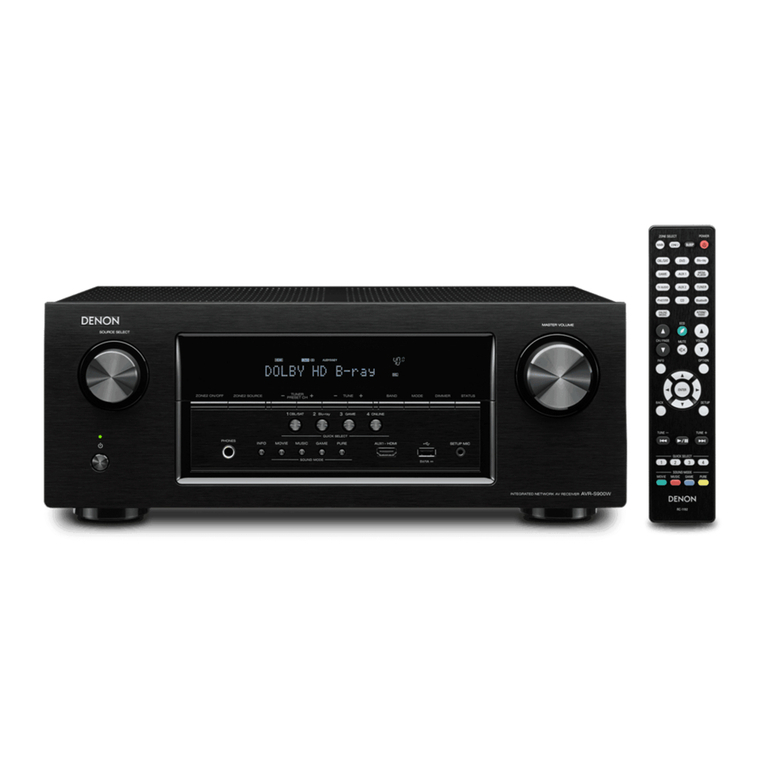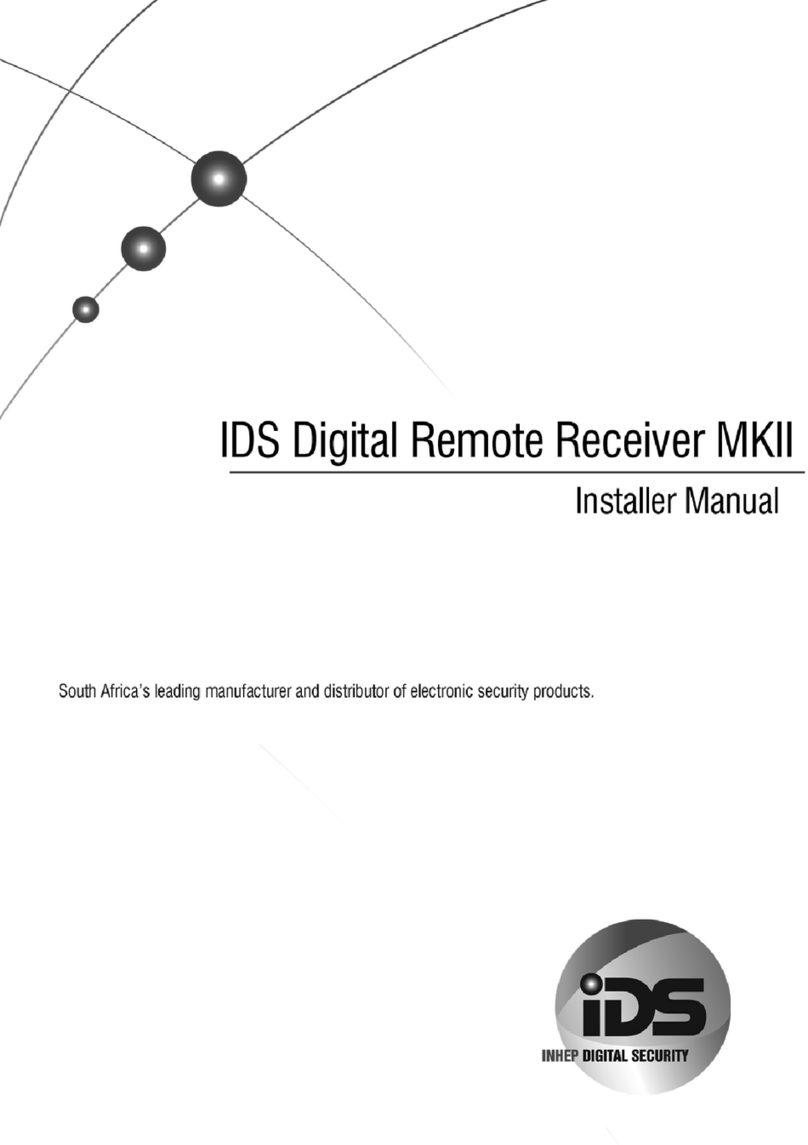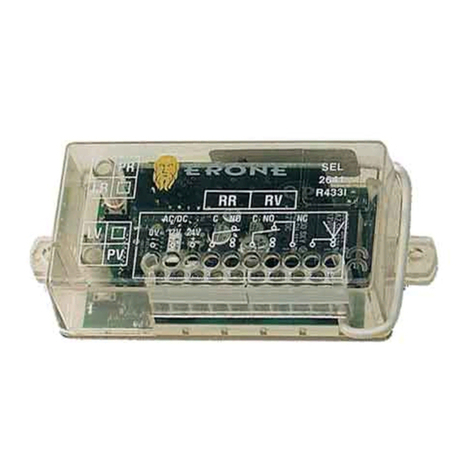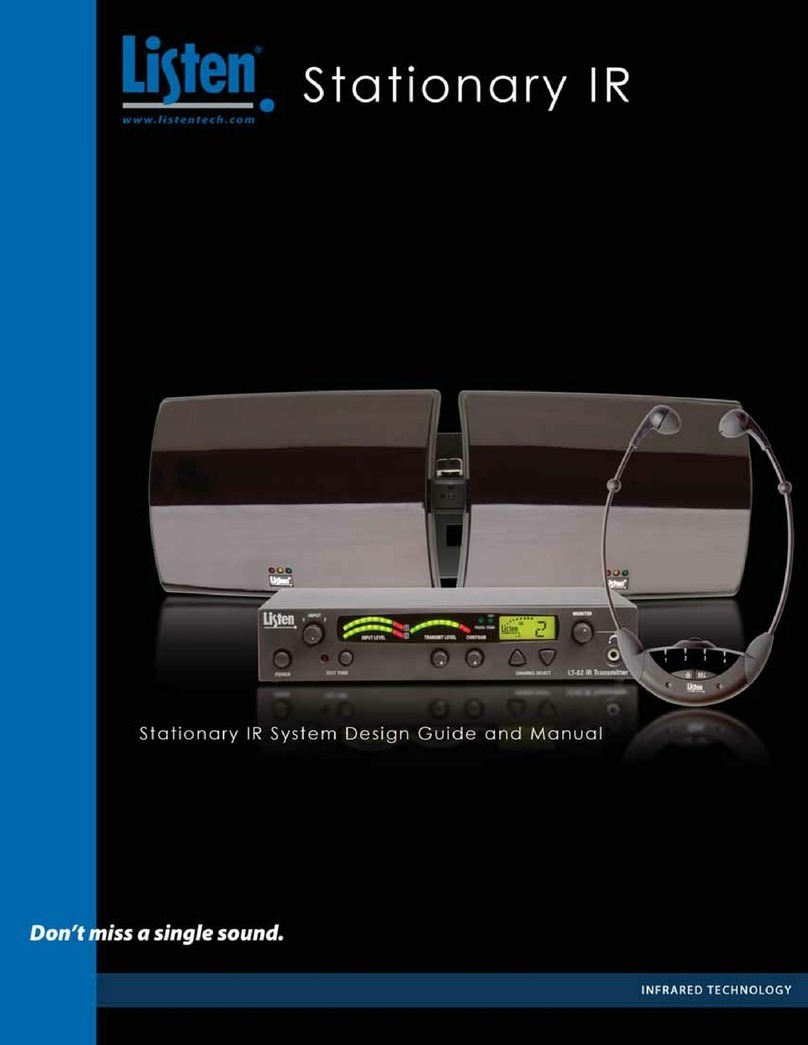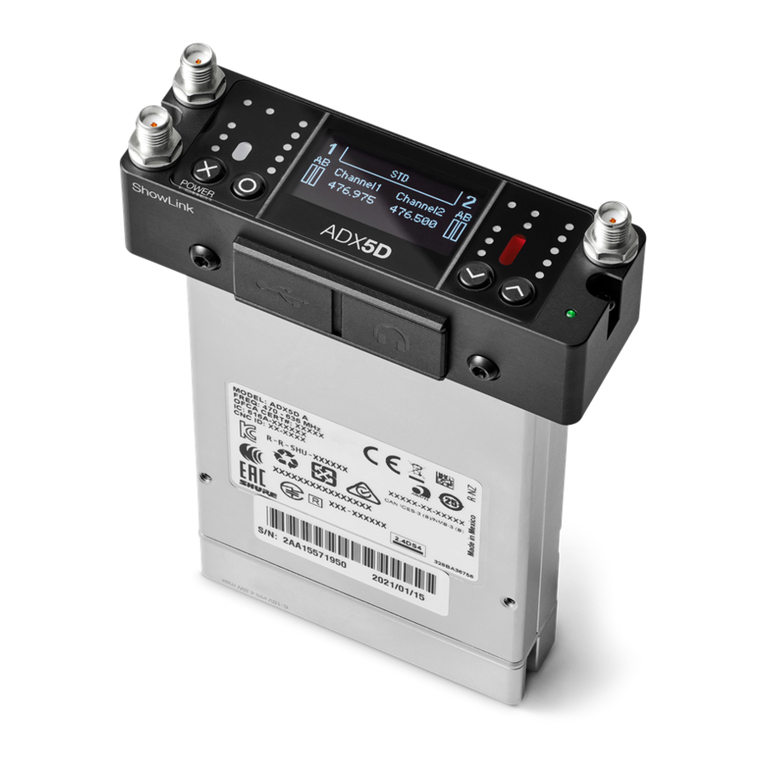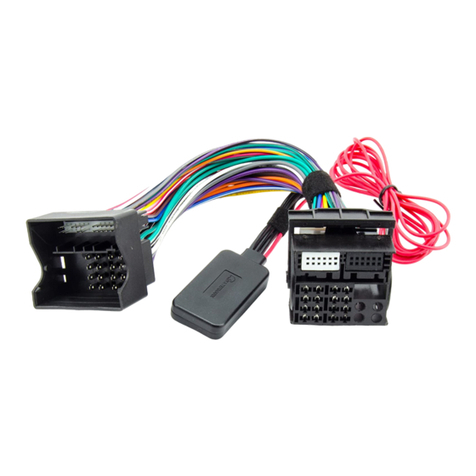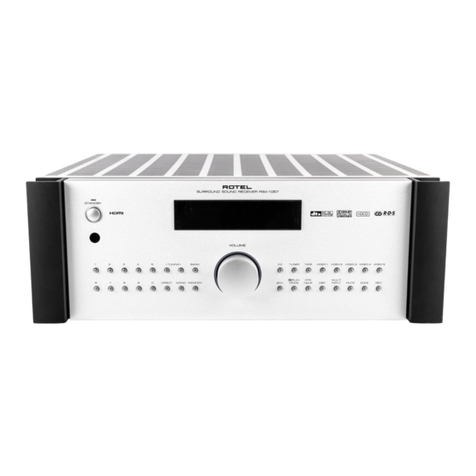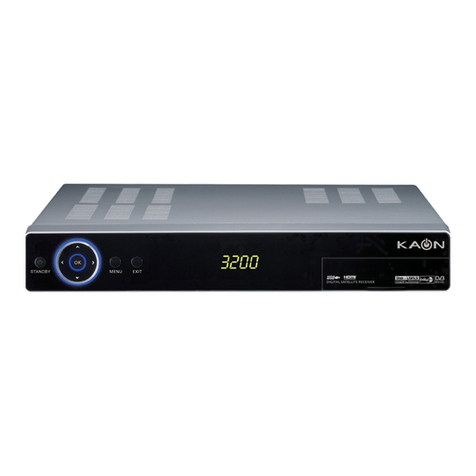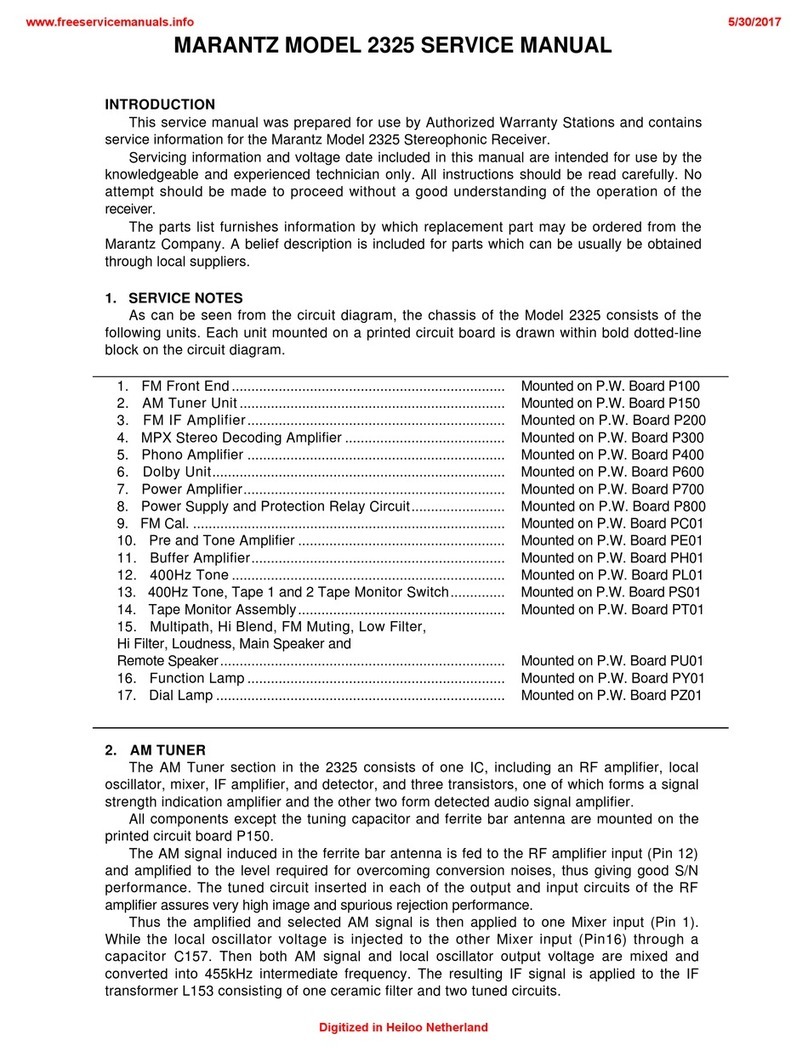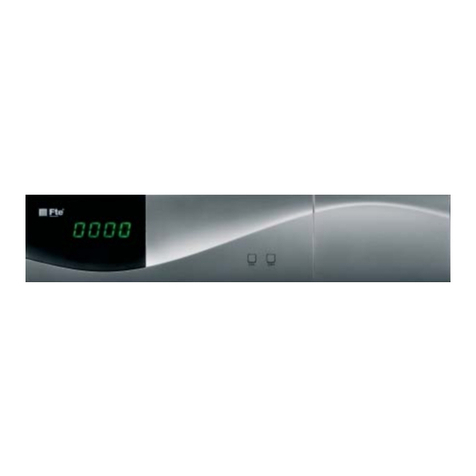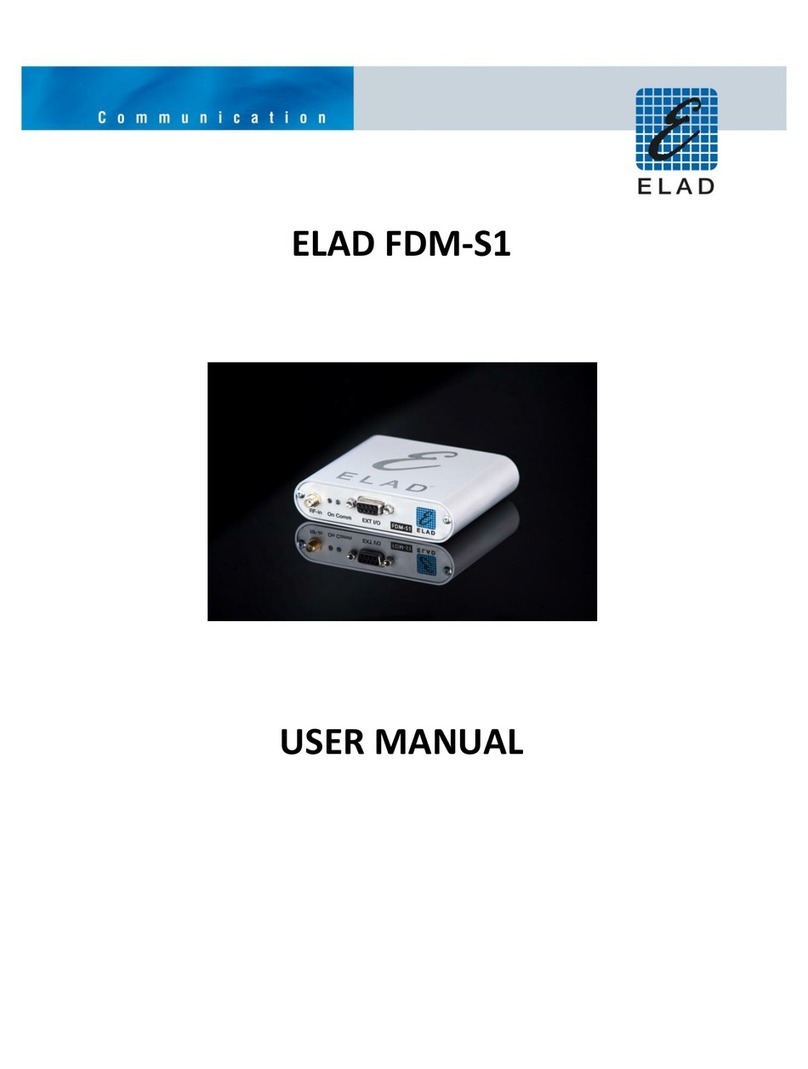Heads Up Technologies XMR100 User manual

H E A D S U P T E C H N O L O G I E S
XM RADIO SYSTEM
COMPONENT INSTALLATION MANUAL
Model Numbers: XMR100, XMR200, XMR400, XMR800, XMC100, XMRANT
Revision Level: C
Revision Date: 04/05/06
Document Control No.: XMR-3
Approvals:
Author:
J. Header, Engineering
Checked:
M. Wootton, Engineering
Approved:
D. Groos, Marketing
Heads Up Technologies, Inc.
2033 Chenault Dr., Suite 100
Carrollton, Texas 75006

XM Radio
Installation Manual
XMR-3
Rev. C, 04/05/06 Page 2 of 31
H E A D S U P T E C H N O L O G I E S
REVISION HISTORY
Revision Change Date Description of Change
- 06/04/03 Initial Release
A 06/09/03 PG 12: Changed warranty period from 1 to 2 years.
B 01/08/04 Added reprogramming jack installation information.
Added XMC-3A drawing to applicable documents
section.
C 04/05/06 Added description and use information for the
discrete inputs of the XMRX00 per ECN 894.
Removed “max” current ratings since they are not
needed for the aircraft load analysis. Corrected audio
output level and added volume adjust range spec.
Added SAT RF specs.
Reworded several sections for clarity and
compatibility with Ver 1.13 or later software. Added
multi-receiver information to Section 3.2.
Added disable announcements description, audio
wiring details, antenna installation considerations.
Added Maintenance section including
troubleshooting matrix, system info, etc.
Replaced all information related to ‘40-ft max or
11dB max cable antenna loss’ to specifying ‘22dB
(+/-2dB)’ gain to the receiver input and added some
common cable type reference information.
Added pre-activation note. Changed listed part
numbers on title page to specific model nos.

XM Radio
Installation Manual
XMR-3
Rev. C, 04/05/06 Page 3 of 31
H E A D S U P T E C H N O L O G I E S
TABLE OF CONTENTS
1.0 INTRODUCTION ........................................................................................................................... 5
1.1 SCOPE ................................................................................................................................................ 5
1.2 APPLICABLE DOCUMENTS.................................................................................................................. 5
1.3 PRODUCT SUPPORT SERVICES ............................................................................................................ 5
1.4 DEFINITIONS ...................................................................................................................................... 6
2.0 PRODUCT DESCRIPTION........................................................................................................... 7
2.1 SYSTEM OVERVIEW ........................................................................................................................... 7
2.2 ANTENNA........................................................................................................................................... 7
2.3 RECEIVER........................................................................................................................................... 8
2.4 USER INTERFACE................................................................................................................................ 9
2.4.1 Control Head ............................................................................................................................ 9
2.4.2 Cabin Entertainment Management System (CEMS) Options ................................................... 9
2.4.3 Discrete Control Inputs ............................................................................................................ 9
2.5 SYSTEM ELECTRICAL SPECIFICATIONS............................................................................................. 10
2.5.1 Power and Load Analysis Information ................................................................................... 10
2.5.2 Audio Output Information....................................................................................................... 10
2.5.3 Satellite RF Input/Output Information.................................................................................... 10
3.0 INSTALLATION .......................................................................................................................... 11
3.1 OVERVIEW ....................................................................................................................................... 11
3.2 DETERMINING THE SYSTEM OPTIONS............................................................................................... 11
3.2.1 Quantity of Audio Sources ...................................................................................................... 11
3.2.2 User Interface ......................................................................................................................... 11
3.2.3 System Examples..................................................................................................................... 12
3.3 SYSTEM LIMITATIONS ...................................................................................................................... 14
3.3.1 Environmental Limits.............................................................................................................. 14
3.3.2 Functional Limits.................................................................................................................... 14
3.4 ANTENNA INSTALLATION CONSIDERATIONS.................................................................................... 15
3.4.1 Antenna Coaxial Cable Installation ....................................................................................... 15
3.4.2 Interference from VHF and SATCOM Transmitters............................................................... 16
3.5 AUDIO DISTRIBUTION ...................................................................................................................... 17
3.5.1 Audio Playback Interruption .................................................................................................. 17
3.5.2 Default Audio Playback Configuration .................................................................................. 17
3.6 SYSTEM MOUNTING ......................................................................................................................... 18
3.6.1 Antenna................................................................................................................................... 18

XM Radio
Installation Manual
XMR-3
Rev. C, 04/05/06 Page 4 of 31
H E A D S U P T E C H N O L O G I E S
3.6.2 Receiver .................................................................................................................................. 18
3.6.3 XMC Control Head................................................................................................................. 19
3.7 WIRING ............................................................................................................................................ 20
3.7.1 Wiring Notes ........................................................................................................................... 20
3.7.2 Grounding and Shielding........................................................................................................ 21
3.7.3 Aircraft Load Analysis Support .............................................................................................. 21
3.8 SERVICE ACTIVATION ...................................................................................................................... 22
4.0 SYSTEM CHECK......................................................................................................................... 23
4.1 POWER-UP CHECK............................................................................................................................ 23
4.2 SYSTEM TEST................................................................................................................................... 23
4.2.1 Power System and Initial Test ................................................................................................ 23
4.2.2 Audio Distribution .................................................................................................................. 23
4.2.3 Volume Mute and Configuration ............................................................................................ 24
4.2.4 Remote Control Test ............................................................................................................... 24
MAINTENANCE ....................................................................................................................................... 25
XM SIGNAL QUALITY CHECK .................................................................................................................. 25
5.1.1 Enable Maintenance Access ................................................................................................... 25
5.1.2 Signal Quality Monitor........................................................................................................... 26
5.2 SYSTEM COMMUNICATION CHECK................................................................................................... 26
5.3 SYSTEM SETUP INFORMATION.......................................................................................................... 27
5.3.1 System Firmware Version Identification ................................................................................ 27
5.3.2 Volume Config ........................................................................................................................ 28
5.4 SYSTEM TROUBLESHOOTING............................................................................................................ 29
5.5 REPROGRAMMING ............................................................................................................................ 30
LIMITED WARRANTY ........................................................................................................................... 31

XM Radio
Installation Manual
XMR-3
Rev. C, 04/05/06 Page 5 of 31
H E A D S U P T E C H N O L O G I E S
1.0 INTRODUCTION
1.1 Scope
To provide product description and installation reference information for the XM Radio
entertainment system, manufactured by Heads Up Technologies, Inc. of Carrollton,
Texas.
1.2 Applicable Documents
The following documents are included with the installation package and provide required
installation reference information:
HUT XMR-3A Wiring Reference Diagram with XM
Control Head
HUT XMR-3B Wiring Reference Diagram using 3rd
Party Cabin Audio System
HUT XMC-3A Remote Sensor Install Detail
HUT XMRANT-01-ICD Interface drawing, standard antenna
HUT XMR800-01-ICD Interface drawing, XMR800
HUT XMR400-01-ICD Interface drawing, XMR400
HUT XMR200-01-ICD Interface drawing, XMR200
HUT XMR100-01-ICD Interface drawing, XMR100
HUT XMC100-01-ICD Interface drawing, XMC100
HUT XMC-4 Operation Manual, XM Control Head
1.3 Product Support Services
Customer Service Dept.
Heads Up Technologies, Inc.
2033 Chenault Dr. Ste. #100
Carrollton, Texas 75006 USA
Tel: 972-980-4890 FAX: 972-980-4843
EMAIL: se[email protected]
For subscription activation go to XM Radio’s web site at xmradio.com or call 1-800-985-
9200.

XM Radio
Installation Manual
XMR-3
Rev. C, 04/05/06 Page 6 of 31
H E A D S U P T E C H N O L O G I E S
1.4 Definitions
Below is a list of definitions and acronyms for the purpose of this manual.
ICD – Interface Control Drawing
HUT – Heads Up Technologies, Inc.
CEMS – Cabin Entertainment Management System
XM – XM Satellite Radio, Inc.
XMWX – XM Weather
PA – Passenger Address
SDAR – Satellite Digital Audio Receiver
XMR – HUT XM Radio Receiver
Channel – 1) “receiver channel” - A single XMR module with an integrated XM
radio tuner, stereo audio output, discrete control inputs, and XM programming
selection. 2) “XM channel” - A station on the XM broadcast, such as “XM 40 -
Deep Tracks”.
Category – Group of XM channels of a specific genre.
XMR100 – 1-channel XMR
XMR200 – 2-channel XMR
XMR400 – 4-channel XMR
XMR800 – 8-channel XMR
XMC – HUT XM Radio Controller
XMRANT – Standard HUT Antenna for use with HUT XMR devices.
EMI – Electro-magnetic Interference
RFI – Radio Frequency Interference
LRU – Line Replaceable Unit

XM Radio
Installation Manual
XMR-3
Rev. C, 04/05/06 Page 7 of 31
H E A D S U P T E C H N O L O G I E S
2.0 PRODUCT DESCRIPTION
The XMR System is a Satellite Digital Audio Receiver (SDAR) entertainment device
intended for use in aircraft passenger cabins. The system receives user selectable
satellite transmitted digital audio programming providing music, news, live sports and
talk shows.
2.1 System Overview
The XMR system consists of multiple component types. Depending on the configuration
of the system, the component types can vary, however all system configurations will
have the minimum components of at least: 1) an antenna, 2) one or more receivers, and
3) a user interface.
The system design is network based to provide single point control of the entire system.
Figure 1 below, illustrates a simple block diagram of the system communications.
Figure 1 – XMR System Networking and Satellite Diagram
2.2 Antenna
The antenna receives the transmission from one or both geo-synchronous orbiting
satellites, which are pointed at the contiguous 48 states of the USA. The antenna is
similar to GPS type antennas, in that it is receive only, low profile in size with a
hemispherical receive pattern, and includes a low noise amplifier (LNA) to boost the
signal through several feet of cable to the receiver. Refer to Section 3.4 for antenna and
cable installation information.

XM Radio
Installation Manual
XMR-3
Rev. C, 04/05/06 Page 8 of 31
H E A D S U P T E C H N O L O G I E S
2.3 Receiver
This component is manufactured in 4 types, having 1, 2, 4 or 8 individual SDAR modules
or “receiver channels”. It is a multiple micro-processor based electronic device which
decodes the digital satellite signal and provides an analog stereo audio output(s) to the
listener(s).
The receiver, depending on the number of tuner modules, distributes the single antenna
input feed with an internal RF splitter to each module. On the XMR400, XMR800 and
Heads Up XM WX data receivers, an internal RF splitter incorporates an output to “daisy
chain” additional Heads Up receiver components. Please refer to the Section 3.0 for
more information.
The receiver is intended as a remote mounted device and requires a user interface to
control the functions such as channel selection, volume settings, etc. Figure 2 below
provides an illustration of the 4-channel receiver (XMR400).
Figure 2 - XMR Interface Layout (XMR400 shown)

XM Radio
Installation Manual
XMR-3
Rev. C, 04/05/06 Page 9 of 31
H E A D S U P T E C H N O L O G I E S
2.4 User Interface
The user interface can consist of different types depending on the users requirements.
Three main interface types are supported by the receiver(s): 1) the HUT XMC Control
Head, 2) data interface to a Cabin Entertainment Management System (CEMS) and 3) a
custom built device that utilizes the receivers discrete control inputs.
2.4.1 Control Head
The Heads Up XMC series control head is a microprocessor based device which
incorporates a touch-screen Liquid Crystal Display (LCD) with full color graphics. The
XMC and receiver(s) communicate through a multi-node data bus (RS-485) to transmit
and receive commands, XM channel information and other status data.
User control of the XM system receivers is provided by this device through the use the
touch-screen display. In addition, the XMC also includes an optical LED remote control
sensor (interface to an external sensor is also provided) for use with the HUT XMR100-
Remote Control Devices.
2.4.2 Cabin Entertainment Management System (CEMS) 1 Options
The receiver incorporates several communication interconnects to interface with a
CEMS to send channel change commands and receive channel information. Standard
HUT CEMS command protocol interfaces have been developed for general use. 3rd
party proprietary protocols are also implemented for interface to those parties CEMS
equipment only.
For more information on interfacing a CEMS to a XMR system, contact Heads Up
Technologies customer support via email at info@heads-up.com.
2.4.3 Discrete Control Inputs
Two types of discrete control inputs are available:
Main Interface Inputs
The J1 interface of the XMR includes a PA-key input to mute the system and
configuration-strap type inputs that allows the installer to configure the operation of the
XMR at power-up. Refer to Section 3.5.2 for more information.
Receiver Channel Interface Inputs
Discrete inputs (active ground) are included on each receiver channel for user XM
programming control to scroll (Up or Down) through each channel, category and channel
preset. These inputs are intended to be used in conjunction with a XMC since these
inputs only provide limited functionality. Please note, presets can not be set with these
inputs.
These inputs would typically be connected to an installer fabricated switch panel
mounted near a passenger seating area. An example is illustrated in Figure 3 below.
1Data protocol definition required, contact product support services.

XM Radio
Installation Manual
XMR-3
Rev. C, 04/05/06 Page 10 of 31
H E A D S U P T E C H N O L O G I E S
Figure 3 - In-Seat Control Panel Example
2.5 System Electrical Specifications
2.5.1 Power and Load Analysis Information
Power Input, Voltage 28VDC(per DO-1060D, Cat. Z)
Power Input, Current, XMR800 2.0A(nominal)
Power Input, Current, XMR400 1.0A(nominal)
Power Input, Current, XMR200 0.6A(nominal)
Power Input, Current, XMR100 0.4A(nominal)
Power Input, Current, XMC100 0.4A(nominal)
2.5.2 Audio Output Information
Output Impedance 600Ω
Output Level (Nominal) 0dBV (0.775VRMS)
Volume Adjustment Range -30 - +12dBV
2.5.3 Satellite RF Input/Output Information
Input/Output Center Freq. 2.339 GHz
Input Impedance 50-ohms
Input Expected Antenna Gain 22dB (+/- 2dB)
Output Impedance 50-ohms
Output Gain 0dB (+/- 1dB) Nominal
Connector Type SMA

XM Radio
Installation Manual
XMR-3
Rev. C, 04/05/06 Page 11 of 31
H E A D S U P T E C H N O L O G I E S
3.0 INSTALLATION
3.1 Overview
The installation process consists of:
•Determining the system options
•Determining the audio distribution and volume configuration
•Determining the locations of the system components (antenna, receiver(s),
control head, programming jack)
•Mounting the components
•Wiring and aircraft load analysis
•Initial set-up and testing
•Subscription service activation
3.2 Determining the System Options
The HUT XM Radio System is available in several device types providing the customer
several options as to how they wish to operate and enjoy the system.
This equipment can be installed as a complex system or very basic one, depending on
the limits of the customer (i.e. budget or schedule), the equipment and the aircraft.
3.2.1 Quantity of Audio Sources
The user must determine the number of individual XM program source modules, or
“receiver channels”. For a basic system, a 1-channel receiver would be used as a music
source to the aircraft’s existing cabin audio system. All of the passengers would share
the XM Radio programs from that single receiver. If the customer wishes to
accommodate each passenger with individual XM programming, a multiple receiver unit
will be required.
Please note: XM Radio, Inc. subscription fees are required for each receiver channel.
3.2.2 User Interface
The second determination is how the system is to be interfaced to the user. Since this
equipment is mounted in view of the occupants, aesthetic as well as functional
considerations are in play for this decision process. As far as the scope of this manual is
concerned, only some the functional considerations are explained.
As described in the previous sections, the equipment options are a XMC control head,
CEMS and discrete inputs. In addition, any combination of the three can be used, for
example, using the discrete inputs with the XMC or the CEMS.

XM Radio
Installation Manual
XMR-3
Rev. C, 04/05/06 Page 12 of 31
H E A D S U P T E C H N O L O G I E S
3.2.3 System Examples
Some examples of system setups are shown here to help provide an understanding of
how the system can be configured.
Figure 4 below shows an example of a basic system.
Figure 4 - Basic System Setup

XM Radio
Installation Manual
XMR-3
Rev. C, 04/05/06 Page 13 of 31
H E A D S U P T E C H N O L O G I E S
Figure 5 below is an example of a 5-channel system, using (2) XMR units. Note the node
address settings.
Figure 5 - Multi-Receiver “5-Channel” System

XM Radio
Installation Manual
XMR-3
Rev. C, 04/05/06 Page 14 of 31
H E A D S U P T E C H N O L O G I E S
3.3 System Limitations
The XM Radio system installation must be defined within the environmental and
functional limitations defined here.
3.3.1 Environmental Limits
All of the HUT XM Radio system components have been tested to RTCA DO-160D. The
list below describes the intended aircraft installation location for each equipment type:
•Antenna – External, top fuselage mount, up to 55,000 feet.
•Control Head – Interior, pressurized and temperature controlled area such as
passenger cabin in transport or non-transport aircraft.
•Receiver – Interior, non-pressurized or pressurized, semi-temperature controlled
area such as an avionics bay. Electromagnetic emissions testing of the receivers
will also allow them to be installed in the passenger cabin of transport aircraft.
Refer to the installation data package of applicable equipment type for the environmental
test report.
3.3.2 Functional Limits
Antenna
•The overall gain of available antennas will vary and specifications for the installed
antenna is required to determine the overall cable loss needed, through cable
type and length, to provide 22dB (+/-2dB) of gain to the receiver input.
•The maximum number of receiver modules that a single antenna can feed is
(25). For example, a single antenna can be used with up to (1) HUT XM WX
receiver and (3) HUT XMR800, 8-receiver devices daisy-chained together.
•When feeding multiple receivers, the cable run cannot be split and must be
daisy-chained utilizing the “ANT OUT” of such equipped receivers.
XMC Control Head
•A single control head can be used with up to (16) receiver modules.
•Do not install termination resistors on the communication bus. Wire as shown on
the “typical wiring diagram”, dwg No. XMR-3A.
•The touch screen interface of the XMC does not provide volume controls.
Volume can only be adjusted using the XMR100-Remote device or through an
appropriately configured CEMS.
Receiver
•The XMR100 (1-receiver) and XMR200 (2-receiver) do not include an “ANT
OUT” jack and cannot be used in a multi-receiver configuration, unless
connected at the end of an antenna feed chain with receivers equipped with this
jack.

XM Radio
Installation Manual
XMR-3
Rev. C, 04/05/06 Page 15 of 31
H E A D S U P T E C H N O L O G I E S
•If the system is configured as a receiver-only, without a XMC control head, the
“power enable” input (J1-18) must be strapped to 28VDC DC power.
•The receiver provides stereo (left and right) 600Ωtransformer balanced audio
outputs for each receiver module. It is recommended that each audio source is
amplified for the best audio quality. If headphones are connected directly to the
receiver audio output, the audio level may not be sufficient.
3.4 Antenna Installation Considerations
The XMR System is designed for use with various XM Radio type-certified antennas
covering the S-Band from 2.332 GHz to 2.345 GHz. Due to the low signal levels inherent
with satellite communications, the following guidelines and recommended practices
should be adhered to for the design of the antenna installation:
•Install IAW AC 43.13-2A Chapter 3, AC 43.13-1B Chapter 11, antenna
manufacturer instructions, and in a manner acceptable to the administrator.
•Mount the antenna on the top of the aircraft to an external surface such as the
fuselage, away from vertical obstructions as to not “shadow” the antenna from
line-of-sight reception of the satellites. (Mount antenna as high on the fuselage
as practical). Relocation of other less location-sensitive transmitters may be
necessary to achieve optimal XM reception performance.
•The mounting of the antenna must provide an electrical bond of 0.003 Ohms or
less the airframe ground.
3.4.1 Antenna Coaxial Cable Installation
The correct cable loss of the antenna feed cable is critical to the performance of the
system operation. The design configuration of the receiver’s input is preset to expect a
total gain range of 22dB (+/- 2dB).
Typical XM Radio type-certified aircraft antennas are configured with a total gain of 30-
34dB where 10dB of total cable loss provides the correct gain to the receiver. Always
refer to the antenna specifications to insure the correct gain. If desired, additional loss of
0.3dB for each SMA connector can be added but is not crucial to system performance.
Table 1 below provides reference information for lengths for various 50-ohm cable types
that are commonly used with SMA connectors to produce the acceptable loss when
used with antennas with 30-34dB of gain. When antennas of other gain values are
installed, the cable length can be determined using the second column of Table 1 below
as follows:
Cable Length (Ft.) = (Antenna Gain – 22) / Loss Rating X 100
When the distance between the antenna and receiver is short, run the amount of cable
required to meet the loss requirement and stow excess length. An alternative to stowing
large amounts of excess cable is to install a low power RF attenuator in-line with the
cable. This system requires a DC bias passing type attenuator that has a frequency
rating that falls within the maximum satellite frequency of 2.345 GHz.

XM Radio
Installation Manual
XMR-3
Rev. C, 04/05/06 Page 16 of 31
H E A D S U P T E C H N O L O G I E S
Table 1 - Cable Length Chart
RG Type
(Mil-C-17)
Loss Rating
(dB/100-Ft.)
@ 2.339GHz
Length Range (Ft.)
@ 8 - 12dB Loss
142 20.6 38.8 – 58.3
400 23.41 34.2 – 51.3
316 40.87 19.6 – 29.4
178 68.82 11.62 – 17.4
3.4.2 Interference from VHF and SATCOM Transmitters
•Mount the antenna no closer than 36 inches to VHF-Comm transmitters of 15
Watts or less. For more powerful transmitting antennas, XM separation should be
a minimum of 48-inches. Installation pre-testing (see note below) should be
performed if the separation is less than 60-inches.
If an XM/VHF-Comm combo style antenna is being installed and replacing the
operation of an existing approved antenna installation, the existing separations
are acceptable.
•SATCOM antennas transmit at 40 Watts and should be separated by the largest
distance possible, or a minimum of 36-inches.
•When routing the XM antenna cable, the maximum possible separation from
transmitter antenna feed cables must be considered, especially with SATCOM
and other high power transmitters. Antenna feed cables of VHF transmitters of 15
Watts or less should only require a minimal separation.
•Receive only antennas such as ADF and GPS do not produce interference and
require little separation. The XM antenna should be placed as close as possible
to these types of antennas to gain separation from transmitters.
NOTE:
When multiple receiver LRUs are installed, the cable loss between the receivers does not
need to be considered when they are in close proximity. In cases where the LRUs are
mounted several feet apart, more detailed cable loss analysis is required to insure all
receiver LRUs receive the correct antenna gain.

XM Radio
Installation Manual
XMR-3
Rev. C, 04/05/06 Page 17 of 31
H E A D S U P T E C H N O L O G I E S
3.5 Audio Distribution
The installer must determine how to get this audio signal to the listener. For a basic
system, a single channel receiver would be connected to the aircraft’s cabin PA, or other
external amplifier would be installed to drive speakers.
For multi-channel systems, a typical scenario is to distribute the individual audio signals
to headphone jacks near the passenger seats that also incorporates a switch panel for
channel control (see Figure 3 above).
3.5.1 Audio Playback Interruption2
For most aircraft operations, it is necessary to interrupt the playback in the event of a
passenger address (PA) from the crew. The system (receiver) incorporates an input to
mute the audio output upon sensing a “page key” or other PA signal. For most
applications, this input can be spliced in parallel to the existing PA-key wire that runs
from the cockpit to the PA system, provided this is a ground-active signal.
3.5.2 Default Audio Playback Configuration
The system also provides (4) “configuration strap” inputs to set the volume and XM
station announcement features of the system.
•Power-up Volume: By default (inputs not connected), all receivers normalize their
volume to a commercial line-level setting (0dBV) at system start-up, or the inputs
2The functionality described in Sections 3.5.1 and 3.5.2 apply to products programmed with Ver.
1.16 or later software.
NOTE:
Installation pre-testing is advised if this installation is being performed on several similar
aircraft such as a fleet. A pre-test can be performed by mounting the antenna on a piece of
aluminum sheet, approximately 24” in diameter or square, to serve as a temporary ground
plane. This antenna assembly would then lay on the aircraft skin near the proposed
installation location for an active ground test prior to cutting mounting holes. This has
proven both beneficial and cost effective in past fleet installations since all transmit
equipment can be operated and tested for XM receiver interference prior to the actual
installation.
This installation manual does not contain approved data for type specific aircraft antenna
installations.

XM Radio
Installation Manual
XMR-3
Rev. C, 04/05/06 Page 18 of 31
H E A D S U P T E C H N O L O G I E S
can be strapped to change this pre-set level to +4.5dBV, +9dBV, -9dBV or
–15dBV at system start-up.
•Volume Control On/Off: By default the receivers audio output volume can be
adjusted from the user interface (remote control or CEMS), or the inputs can be
strapped for a fixed audio output. When volume control is allowed, the power-up
volume choices are –9dBV or 0dBV. Please note, mute conditions (as with a PA
or command sent from the CEMS) will override the fixed setting.
•Volume Save: By default the receivers volumes are pre-set at system start-up.
When this feature is enabled, each receiver stores it’s volume setting in non-
volatile memory (every 30-seconds) and returns to this setting after a re-start of
the system. Please note, this feature overrides the “power-up volume” setting
above.
•Disable Channel Announcements: By default the XMR announces the XM station
when the tuned, when enabled the station announcements are disabled.
Refer to the typical wiring reference diagram, dwg. no. XMR-3A or XMR-3B for a logic
table that defines how the inputs are to be connected for the desired functionality.
3.6 System Mounting
All system components are to be mounted to the aircraft structure. Dimensional and
weight information shall be acquired from the applicable Interface Control Drawing (ICD)
for the component being mounted. Special requirements for the location and mounting of
the components are explained in the following sections:
3.6.1 Antenna
The antenna must have line-of-sight to one or both satellites for proper reception. The
antenna is intended to be mounted on the top middle or forward section of the fuselage.
This location is best suited where aircraft appendages, which could block reception, are
at a minimum height in the field of view of the antenna.
The antenna is designed and environmentally qualified to be mounted on the external
surface of the aircraft. Refer to the environmental qualification data for more information.
3.6.2 Receiver
The receivers are designed and environmentally tested to be mounted in a semi-
temperature controlled, pressurized or non pressurized area such as an avionics bay or
baggage area. Refer to the environmental qualification data for more information.
As a guideline in selecting a location for the receiver, the following requirements must be
met:
•For proper system operation, the antenna to receiver co-axial cable loss is
important. The correct loss of the cable depends on the length, type of cable and
gain of the antenna. Refer to Section 3.4 above for additional information.

XM Radio
Installation Manual
XMR-3
Rev. C, 04/05/06 Page 19 of 31
H E A D S U P T E C H N O L O G I E S
•The rear of the receiver must have no less than a 1-inch air space from other
structure to allow proper airflow.
•The area in front of the receiver must also accommodate the wiring. Up to 4
inches may be required for connectors, minimum wire bending radius and service
access.
•A programming jack is provided in the installation kit of the product. This should
be installed in a convenient, easily accessible location to within 50 feet to the
receiver (Note: For multi-receiver systems, only (1) jack is required and is to be
connected to the receiver at node address #0). The jack consists of a DB-9
socket connector and mounting bracket and is intended to be connected to a PC
RS-232 Com port.
•As per the applicable interface control drawing, the receiver is to be mounted
using the provided mounting holes. Typically the aircraft structure can be match
drilled, populated with nut plates or rivets, and machine screwed to secure the
receiver.
3.6.3 XMC Control Head
The control head can be surface mounted to a cabin interior finished surface or can be
flush mounted. For flush mounting, the overlay finish (fabricated by installer) must have
the appropriate cut-outs for the display, power switch and remote sensor. In both cases,
the control head is to be located and positioned so it is easily viewed and manipulated
by the user(s). In addition, the mounting area must accommodate the interconnect wiring
and connector to the rear of the control head.
Important Note
Choosing the location with concern for the wiring distance from the control head
to receiver is not generally restricted. The placement of the receiver in relation to
the antenna is essential since this has a direct impact on signal performance.
The control head can also be controlled with a remote control device. Placement
of the control head should allow “line-of-sight” for all possible users in the cabin.
An auxiliary remote sensor can be connected if needed to “cover” some
passenger areas which are not in the “line-of-sight” to the control head face.

XM Radio
Installation Manual
XMR-3
Rev. C, 04/05/06 Page 20 of 31
H E A D S U P T E C H N O L O G I E S
3.7 Wiring
The installation package provides wiring reference diagrams to assist in the electrical
design of the installation. The diagrams specify pin-outs, mating connectors, cable types,
wire gauges, breaker size and grounding requirements.
All wiring shall be completed in accordance with the wire reference diagrams and
applicable regulations.
3.7.1 Wiring Notes
1. Power, P1-19: Use 22AWG (M22759/16-22 or equivalent) wire fed from a circuit
breaker of adequate capacity.
2. Power Enable, P1-18: Must be energized for system operation. Apply power through
switch or jumper to P1-19.
3. Stereo Audio Output, (Each Receiver Channel) PX-20, 1, 21 and 2: Stereo
entertainment audio is provided from left and right 600-ohm transformer balanced
outputs. This stereo entertainment output has sufficient output impedance and level
range to be connected directly to headphones or to the “music” input of various crew
audio panels or intercom systems. Connection directly to speakers is not
recommended.
The illustration below is for a headphone jack:
NOTE: Use a ground isolated headphone jack where the “sleeve” of the jack is not
electrically connected to the aircraft ground. If the audio cable run is less than 10 Ft.
from the receiver to the jack, then ground isolation should not be required.
The below illustrations show typical connections to aircraft audio panels:
This manual suits for next models
5
Table of contents
